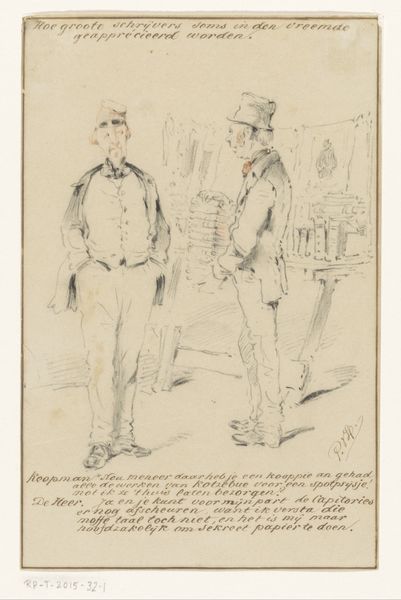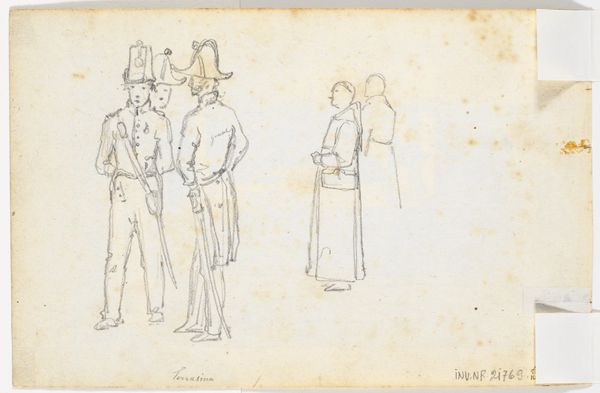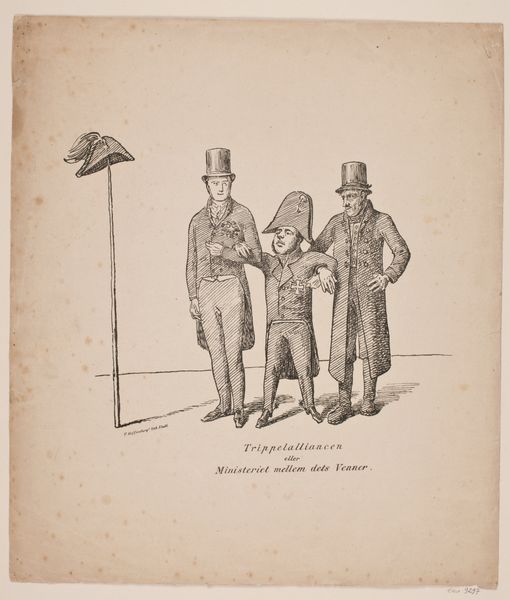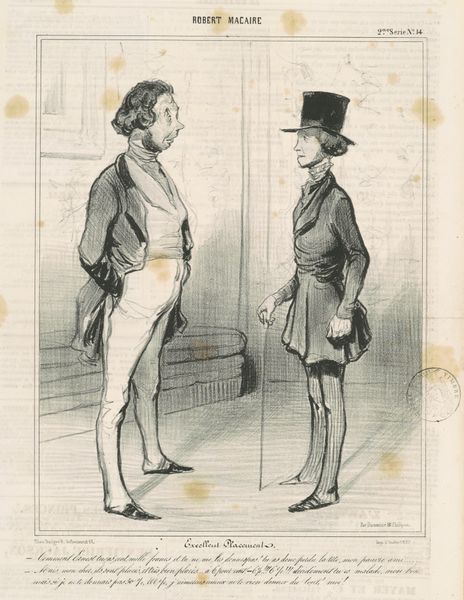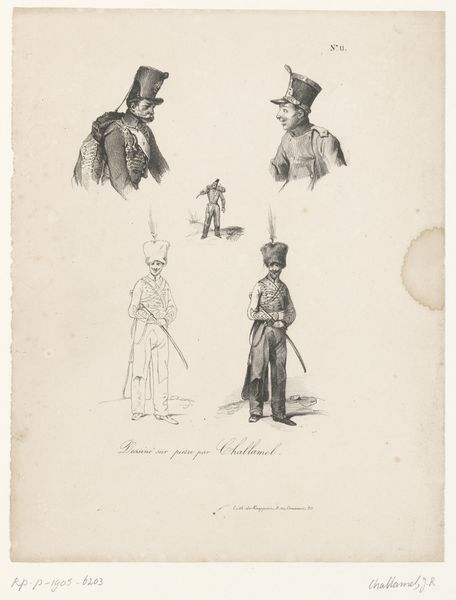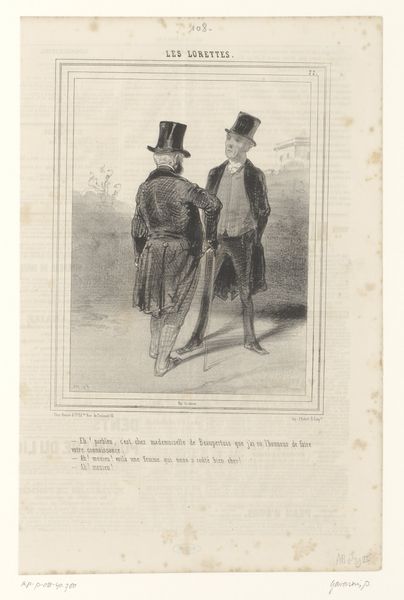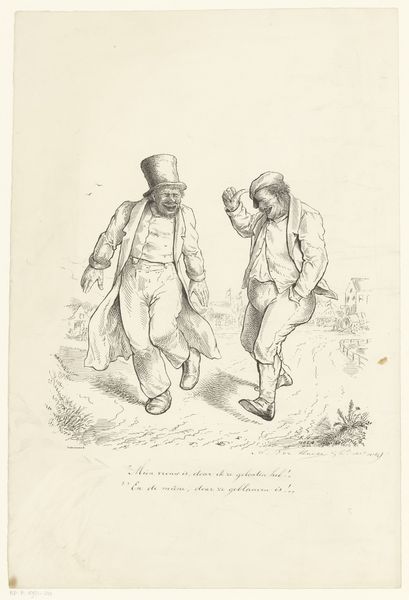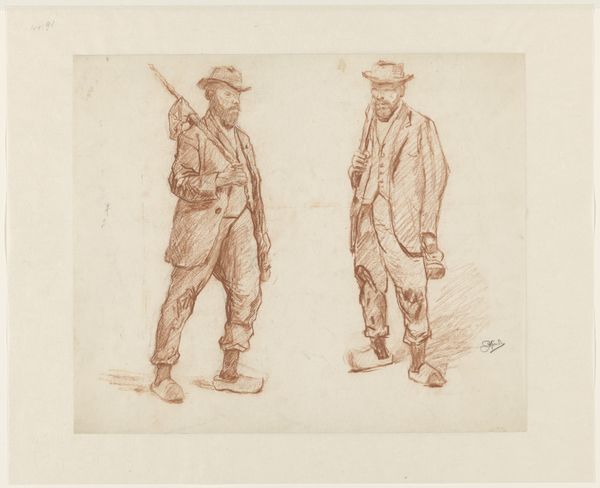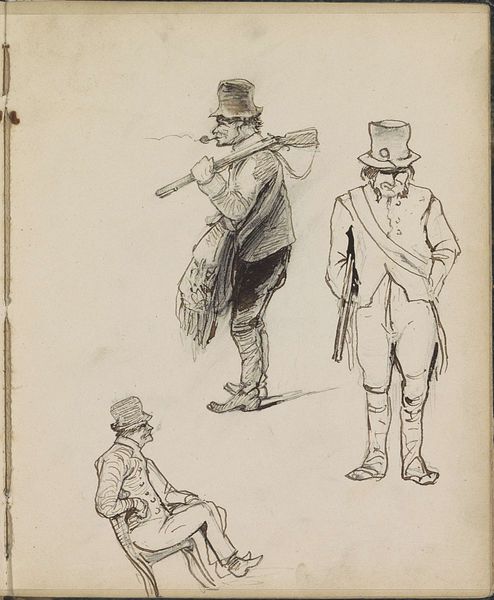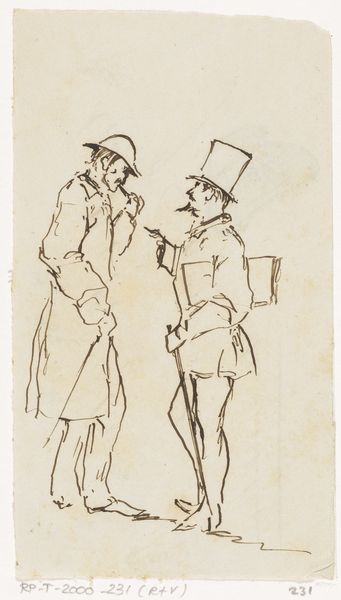
Polizeipräsident von Matthei und Maler Bluntschli auf der Straße
0:00
0:00
drawing, ink, indian-ink, pencil, pen
#
drawing
#
toned paper
#
light pencil work
#
16_19th-century
#
quirky sketch
#
pencil sketch
#
german-expressionism
#
figuration
#
personal sketchbook
#
ink
#
german
#
idea generation sketch
#
indian-ink
#
pen-ink sketch
#
pencil
#
sketchbook drawing
#
pen
#
storyboard and sketchbook work
#
sketchbook art
Copyright: Public Domain
Curator: Here we have a drawing entitled "Polizeipräsident von Matthei und Maler Bluntschli auf der Straße" which translates to "Police President von Matthei and Painter Bluntschli on the Street," by Johann Heinrich Hasselhorst. The artwork, executed in pen, pencil and ink on toned paper, depicts two figures from behind. Editor: Oh, it has such a fleeting, sketchbook quality. Almost like a visual note hastily scribbled, catching two intriguing characters in mid-stride. There's a loneliness, too, despite their being together; backs turned, we can’t engage. Curator: Indeed, the use of mixed media and toned paper allows Hasselhorst to create a sense of depth and texture despite the rather rudimentary lines of the pen and ink, and pencil work. This suggests an engagement with available materials, elevating the simple street sketch to an investigation of materials. Editor: The backs of these two… I'm drawn to the way their coats puff out slightly, suggesting bodies with history, posture telling more than faces could. It is fascinating what clothing communicates of someone's being. Look how differently their hats tell two unique stories of societal positioning. Curator: Their clothing certainly informs. We can note the contrast in attire—the policeman’s formal top hat against the painter’s less structured headwear suggests societal roles and even hierarchies within 19th-century Germany. Editor: Do you think Hasselhorst intentionally set out to make some type of larger commentary, or just capture an ordinary day through the medium of observation? I think the simple fact of choosing these two, a figure of law, next to an artist, feels deliberately potent. Curator: The production process itself reflects the social dynamic: readily available and affordable materials were used to immortalize the relationship of those from different social backgrounds walking together in what looks to be Frankfurt at the time, subtly questioning rigid social structures. Editor: Ultimately, there's a quiet curiosity radiating from this study. As a piece for the sketchbook it's an opening of inquiry, perhaps even a quiet revolution. Curator: A subtle rebellion found within the ordinary materials of its making, and within the implied narrative of unlikely companionship in old Frankfurt.
Comments
No comments
Be the first to comment and join the conversation on the ultimate creative platform.


